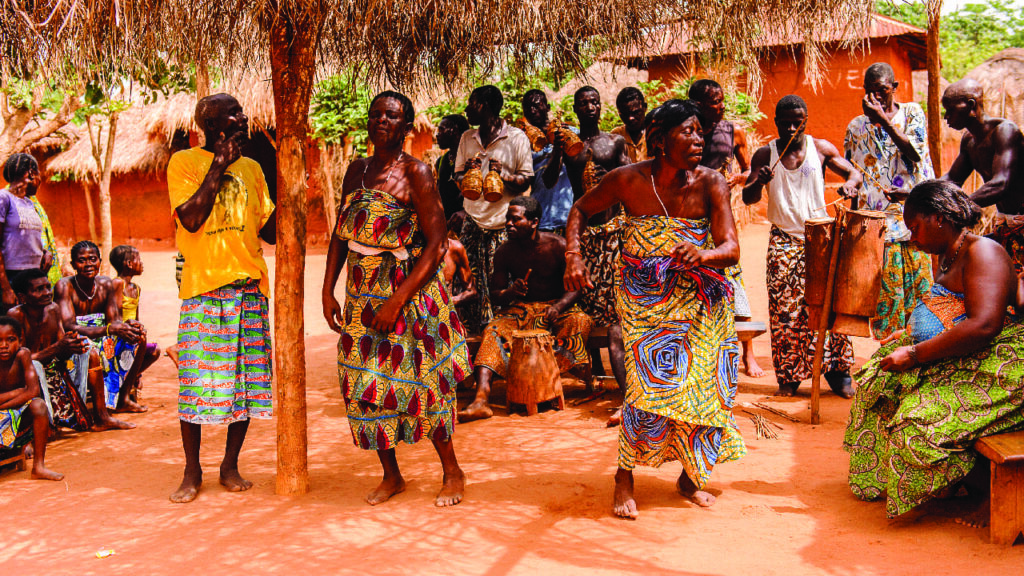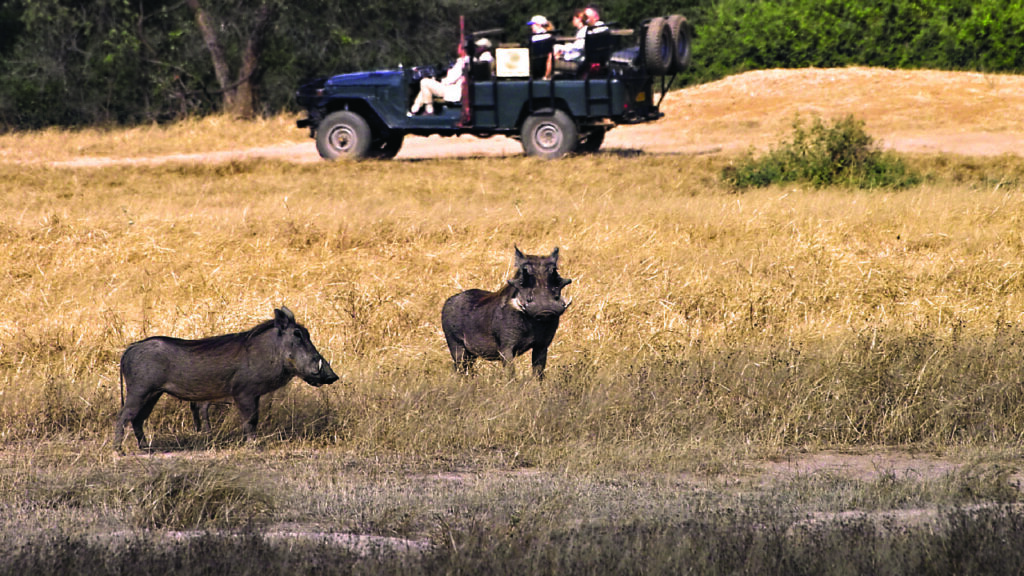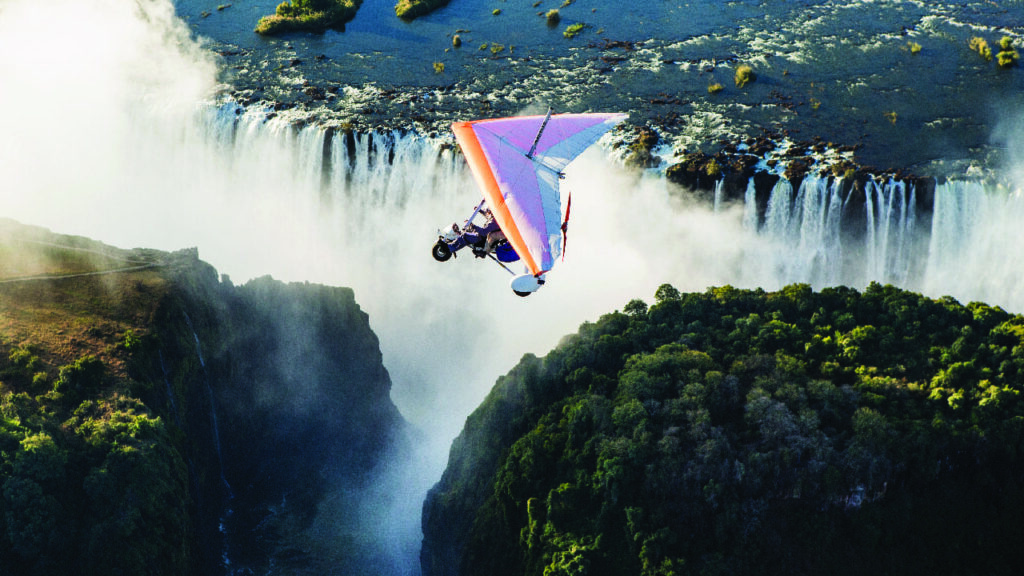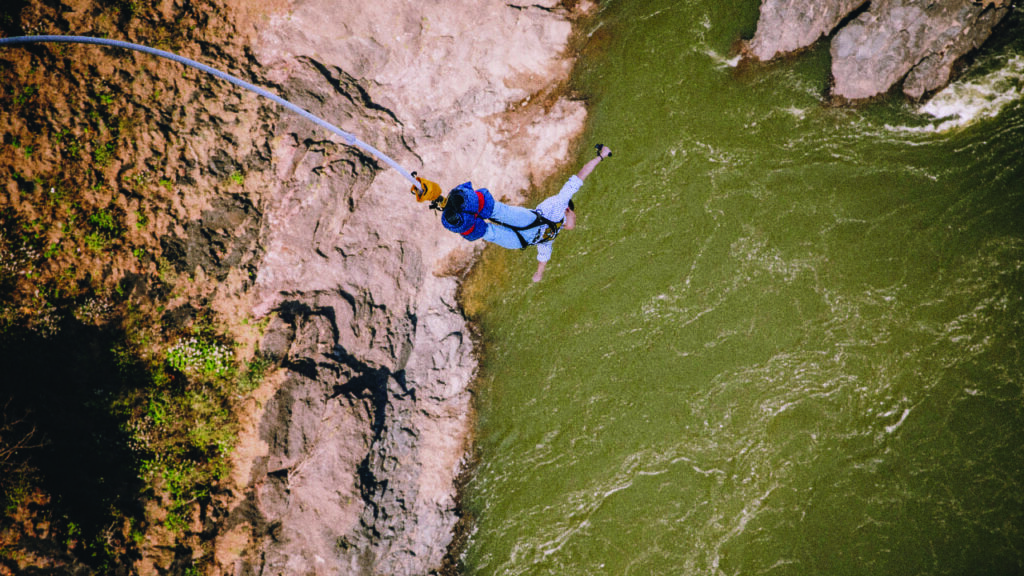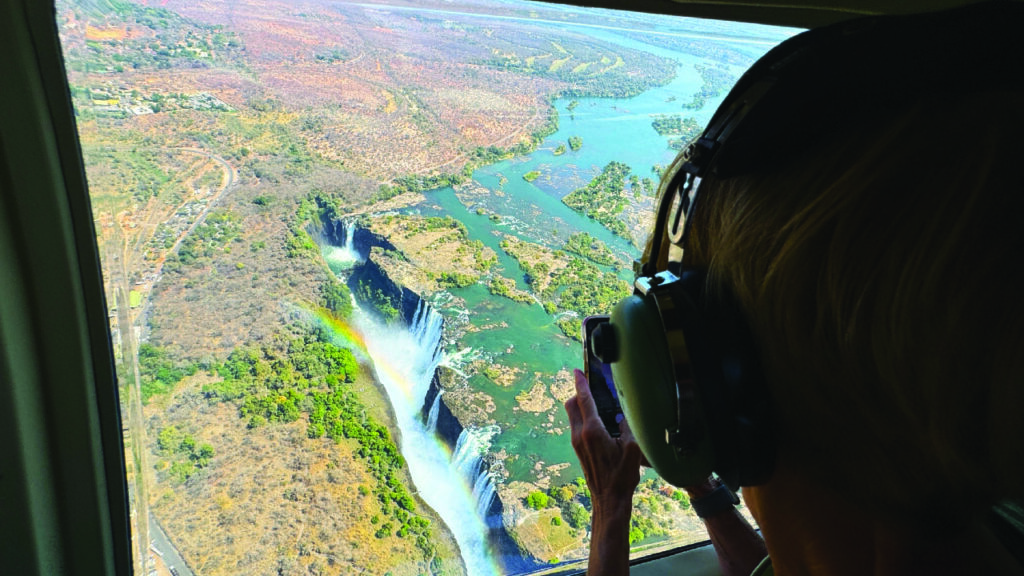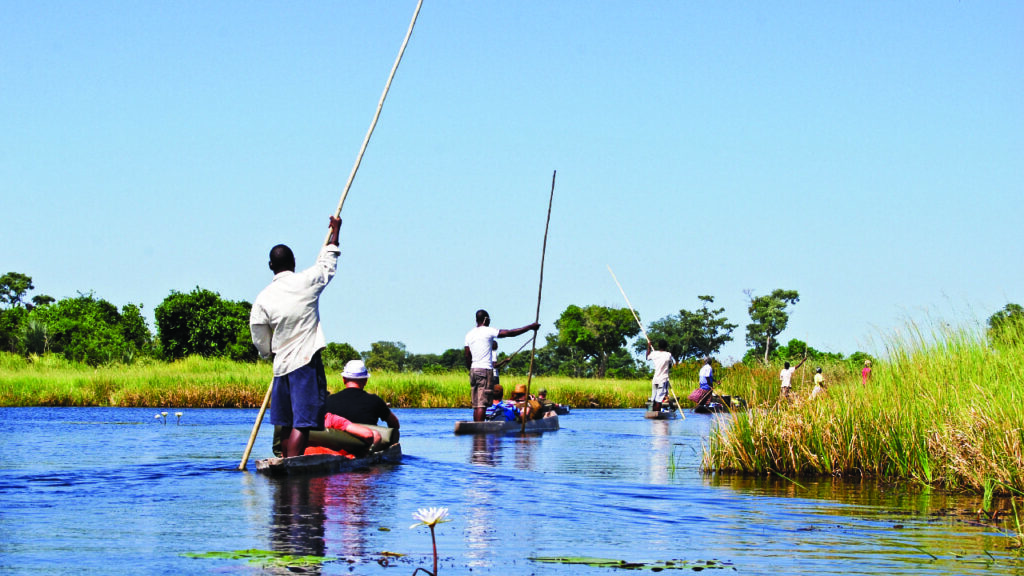ZAMBIA
Adventure Awaits in the Heart of Africa
Zambia offers an authentic and unspoiled experience, making it a hidden gem for travelers seeking nature, culture, and adventure.
Seasons in Zambia
Zambia’s climate varies from tropical in the lowland areas to temperate in higher-altitude regions. The country enjoys three distinct seasons:
Rainy Season (Nov-April): Characterized by high humidity, frequent rainstorms, and lush greenery, this season offers fantastic opportunities for birdwatching as many species migrate to Zambia.
Cool Dry Season (May-Aug): As the weather is comfortable, this is the ideal season for outdoor activities and safaris.
Hot Dry Season (Sep-Oct): Temperatures soar, reaching up to 40°C (104°F). As animals congregate around water sources, wildlife sightings are easy.
Top Reasons to Travel to Zambia
Witness Victoria Falls Up Close
Experience the awe of one of the world’s largest waterfalls, known locally as Mosi-oa-Tunya—“The Smoke That Thunders”—with misty viewpoints and heart-racing edge walks.
Safari Without the Crowds
Zambia offers raw, uncrowded safaris in parks like South Luangwa and Lower Zambezi, where you’ll spot big cats and elephants without tourist traffic.
Walk with Wildlife
Birthplace of the walking safari, Zambia lets you track animals on foot with expert guides—one of the most intimate wildlife experiences on earth.
Canoe the Zambezi River
Paddle past hippos, crocs, and elephants as you canoe along the Zambezi—equal parts adrenaline and serenity in wild, scenic surroundings.
Night Safaris That Deliver
Zambia is one of the few places offering night game drives, where spotlight safaris reveal nocturnal predators like leopards and hyenas in action.
One Country, Many Parks
Zambia is home to 20+ national parks, each with its own vibe—from predator-rich Kafue to the remote wilds of North Luangwa and Liuwa Plains.
Experience the Magic
Soak in the beauty of contrasts between the roaring sound of mighty Victoria Falls and the calls of birds among the rustle of trees. Zambia provides a rare opportunity to immerse yourself in the true African way of life, away from the crowds of mass tourism.
Popular Culinary Experiences for Tourists in Zambia
Zambia offers a rich and diverse culinary experience that reflects its cultural heritage and agricultural abundance. Tourists visiting Zambia can explore a variety of traditional dishes, street food, and fine dining experiences. Here are some of the most popular culinary highlights:
1. Nshima – The Staple Dish
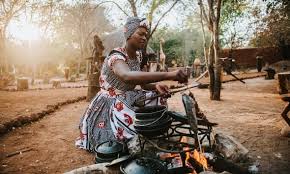
Nshima is Zambia’s national dish, made from maize meal and served as a thick porridge. It is typically eaten with relishes such as:
- Ifisashi – A delicious peanut and vegetable stew.
- Kapenta – Small dried fish, often fried and served with tomato sauce.
- Nyama (Meat Dishes) – Grilled or stewed beef, chicken, or goat.
2. Zambian Village Dining Experiences
Tourists can visit rural villages for an authentic farm-to-table experience. Guests are often welcomed with freshly prepared meals, cooked over an open fire, and served in traditional clay pots.
3. Freshwater Delights from Zambezi River
Zambia’s rivers and lakes provide a variety of fresh fish, including:
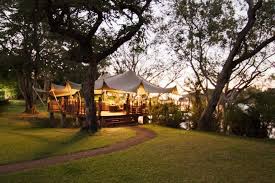
- Bream (Tilapia) – A local favorite, grilled or fried with spices.
- Mpulungu Kapenta – Tiny dried fish, often eaten as a snack or in stews.
4. Lusaka and Livingstone Fine Dining
For a more upscale experience, cities like Lusaka and Livingstone offer fine dining restaurants that blend Zambian flavors with international cuisine. Some notable spots include:
- The Royal Livingstone Hotel – Overlooks the Victoria Falls and serves gourmet African dishes.
- The Elephant Café – Located along the Zambezi River, offering a luxury bush dining experience with locally sourced ingredients.
5. Zambian Street Food Adventures

For a taste of local street food, tourists can explore markets and roadside stalls offering:
- Vitumbuwa – Sweet fried dough balls, similar to doughnuts.
- Chikanda (Zambian Polony) – A unique dish made from wild orchid tubers, ground peanuts, and chili.
- Roasted Maize – A popular snack found in markets and street corners.
6. Traditional Zambian Beverages
- Munkoyo – A non-alcoholic maize-based drink, naturally fermented with roots.
- Chibuku – A traditional sorghum beer, widely enjoyed in rural areas.
Whether dining in a five-star lodge, enjoying local delicacies at a bustling market, or joining a village feast, Zambia’s food scene offers a memorable experience for every traveler.
Festivals of Zambia: A Cultural Celebration
Zambia is rich in cultural diversity, with over 70 ethnic groups, each celebrating unique traditional festivals. These festivals are deeply rooted in history, honoring ancestors, harvests, and spiritual beliefs. Here are some of the most significant festivals in Zambia:
- Kuomboka Festival (Lozi People)
-
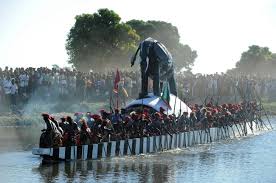
Kuomboka Festival - Celebrated by the Lozi people of Western Zambia, Kuomboka marks the movement of the Litunga (king) from the flooded plains of the Zambezi River to higher ground. The festival features a grand procession of decorated royal barges with traditional drumming and dancing.
- Nc’wala Festival (Ngoni People)
- Held in February by the Ngoni people in the Eastern Province, this festival honors the first harvest and pays tribute to their ancestors. It is famous for its vibrant war dances and the participation of the Ngoni chief.
- Umutomboko Festival (Lunda People)
- Celebrated in July in the Luapula Province, Umutomboko commemorates the migration and conquest of the Lunda people. The festival is marked by traditional dances and speeches from the Mwata Kazembe (chief).
- Likumbi Lya Mize (Luvale People)
- A traditional festival of the Luvale people, it takes place in the North-Western Province. The event features Makishi dancers, who wear elaborate masks and perform symbolic dances representing ancestral spirits.
- Chibwela Kumushi (Bemba People)
-
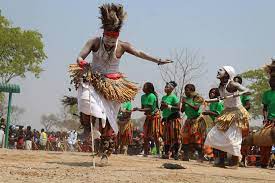
Chibwela Kumushi Festival - This festival, meaning “returning to the village,” is celebrated in Central Zambia by the Bemba people. It marks the start of the farming season and pays homage to ancestral spirits for blessings and guidance.
- Lwiindi Gonde Ceremony (Tonga People)
- Held by the Tonga people of Southern Zambia, this annual festival is a thanksgiving ceremony for the rain and good harvests. It involves rituals led by the chief and traditional songs and dances.
- Shimunenga Festival (Ila People)
- Celebrated in the Southern Province by the Ila people, this festival honors ancestral spirits and showcases Zambia’s strong cattle culture. It features parades of decorated cattle, traditional music, and dancing.
Airports
Zambia’s main international gateway is Kenneth Kaunda International Airport in Lusaka (LUN), serving flights from Africa, Europe, and the Middle East.
Other key airports include Harry Mwanga Nkumbula International Airport in Livingstone (LVI) and Simon Mwansa Kapwepwe International Airport, Ndola (NLA). Regional airports make internal travel convenient.
Flights
All flights from the US to Zambia require at least one stopover, typically in Africa, Europe, or the Middle East. Most flights arrive at Kenneth Kaunda International Airport (LUN) in Lusaka.
Best Airlines & Common Routes
✈ Ethiopian Airlines – via Addis Ababa (ADD)
✈ Qatar Airways – via Doha (DOH)
✈ Emirates – via Dubai (DXB)
✈ Kenya Airways – via Nairobi (NBO)
✈ Lufthansa – via Frankfurt (FRA)
✈ Turkish Airlines – via Istanbul (IST)
Tip: Booking flights 40 to 75 days before departure often yields better deals.
Visa Requirements
Most travelers need a visa for Zambia, which can be obtained on arrival or online through the e-visa system. US citizens enjoy visa-free entry to Zambia for up to 90 days per 12-month period for tourists, and 30 days for business-related visits. A KAZA UniVisa allows tourists to visit Zambia and Zimbabwe multiple times for 30 days.
Getting Around Zambia
Zambia’s public transport includes buses, minibuses, and taxis. Intercity buses connect major towns but can be slow. Taxis are common in cities, but fares should be negotiated. For remote travel, domestic flights or private transfers are recommended.
Travel Tips
Currency: The Zambian Kwacha (ZMW). Credit cards are widely accepted in cities.
Safety: Malaria precautions and vaccinations for yellow fever are recommended.
Electric Plug: Zambia uses Type C, D, and G plugs (most commonly Type G, like the UK) with a 230V, 50Hz supply. US travelers will need a plug adapter and possibly a voltage converter for non-dual voltage devices.
Stay: While Zambia has some great lakeside resorts and lodges, many of these are in remote locations so facilities may be basic.
Explore Unique Attractions in Zambia - Visit the Lumange Waterfalls
Tour Operators
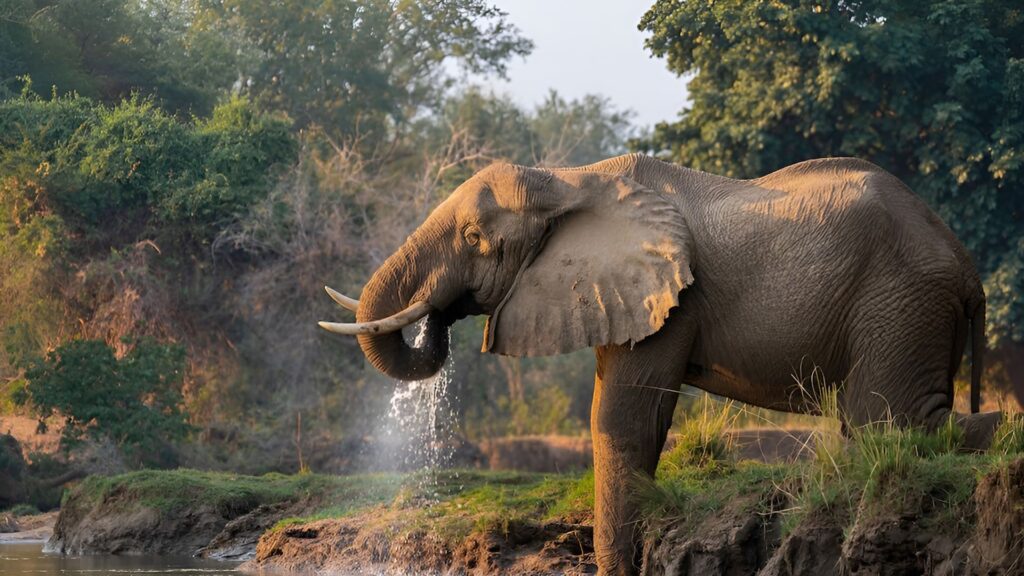
Wild Horizon Expeditions
Wild Horizon Expeditions is a passionate adventure tour operator offering immersive travel experiences across
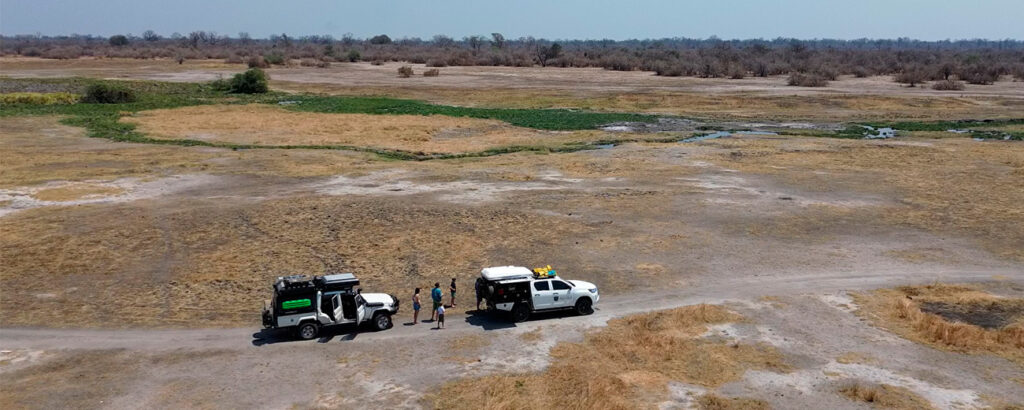
Ultimate Routes
With extensive firsthand experience driving through Namibia, Botswana, Zimbabwe, and Zambia.
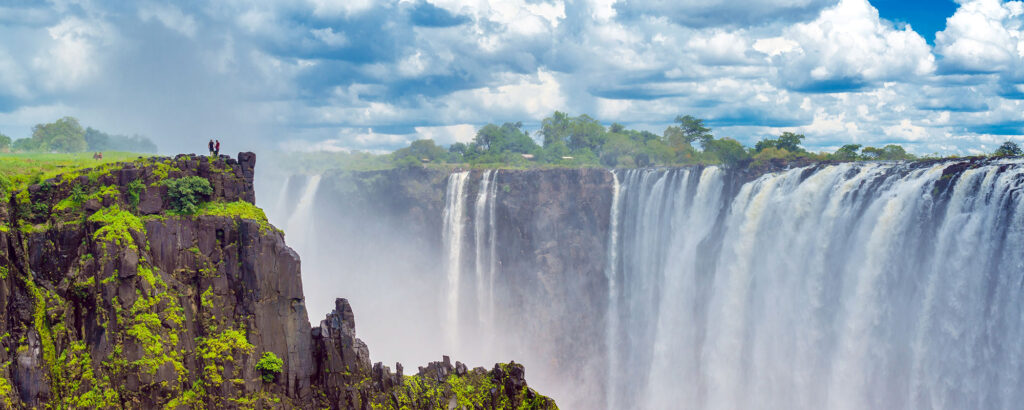
Bushtracks
Bushtracks is a leading destination management company operating from the ‘Heart of Africa’.

Wild Horizon Expeditions
Wild Horizon Expeditions is a passionate adventure tour operator offering immersive travel experiences across
Victoria Falls (Mosi-oa-Tunya)
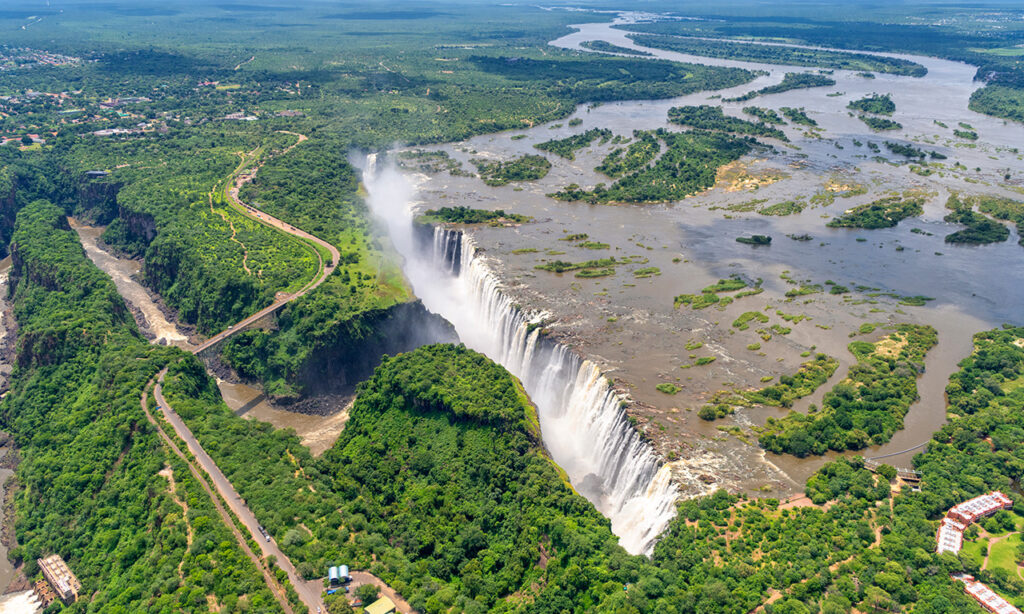
Wildlife Safaris
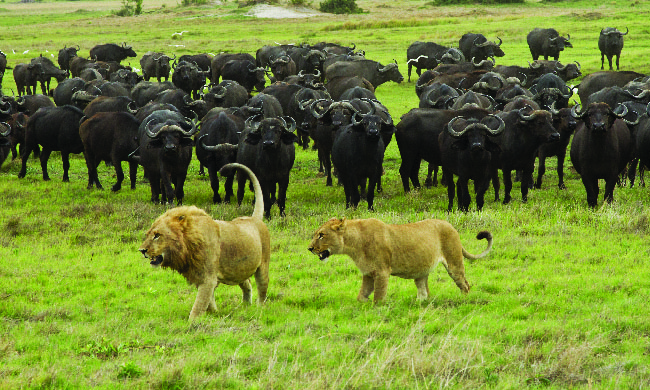
© 2025 Flying Carpet Inc. All rights reserved.


